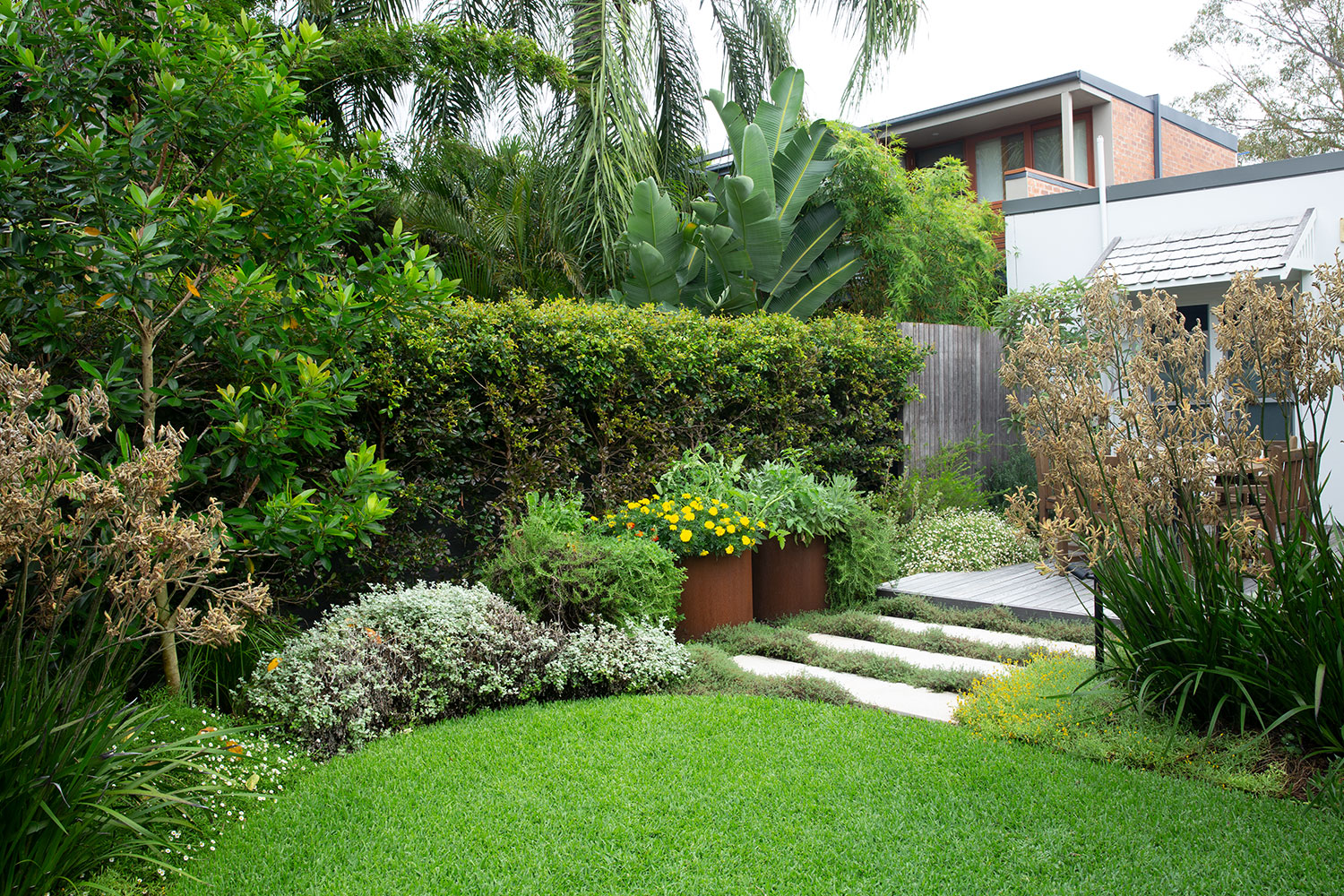When your childhood backyard was a grove of olive trees, but in adulthood, you look out on a gathering of gum trees, recapturing that sense of the Mediterranean might seem ambitious.
But blending Aussie natives with Mediterranean touches can be easy. Use local stone – in this case, Sydney’s honeyed sandstone – to re-imagine the magnificent structures of ancient Rome and Greece.

Neatly clipped hedges and topiaries are common in Mediterranean gardens. Many plants from that region, such as germander and santolina, are super easy to shape and maintain. You can’t have a Mediterranean-themed garden without water. A pond, a small fountain, rills or a water-filled urn, like this one at the garden’s entrance, bring a cooling effect.

A path bordered with sun-loving salvia leads to a kitchen garden planted in raised beds. Lemon trees are a fixture in both Mediterranean gardens and old-fashioned Australian backyards. 4 A wall of honey-toned sandstone brings structure.

There’s no need to be strict about growing only Mediterranean plants. Agaves, yuccas and low-growing succulent blue chalk sticks all thrive in a hot, dry climate.

If your garden is on a slope, consider letting your paths go with the flow rather than putting in steps – especially when you have tykes on trikes or relatives with mobility problems.

Star jasmine is just as easy to train into rounded shapes as balls of buxus.

Plants to use in a Mediterranean garden
Mingle Australian natives with waterwise plants from the Mediterranean – they share similar grey-green foliage – and add purple blooms for a punchy contrast. Then use water-filled urns, fountains or rills to bring a sense of cool and cater for thirsty wildlife. It’s a billabong, Mediterranean style.

01
Salvia
Salvias can cope with intense heat, nutrient-poor soils and drought. Many are native to southern Europe and northern Africa, and well suited to Australia.

02
Pride of Madeira
Echium candicans ‘Pride of Madeira’ is frost hardy, drought tolerant and grows well in hot, dry climates. It grows to 2m high and wide, so takes up space, but it more than pays its rent by producing magnificent conical purple flower spikes in spring and summer.

03
Kalanchoe
Kalanchoe ‘Silver Spoons’ adds more diversity to foliage colours and textures.

04
Redbud
When foliage is king in your garden, you can make the most of the beautiful changing colours of a redbud (Cercis canadensis). Its leaves emerge burgundy coloured in spring, turn green over summer, then explode in red, orange and gold in autumn.

05
Aloe
When introducing colourful flowers, go big, bold and brassy with a golden flowering aloe.




